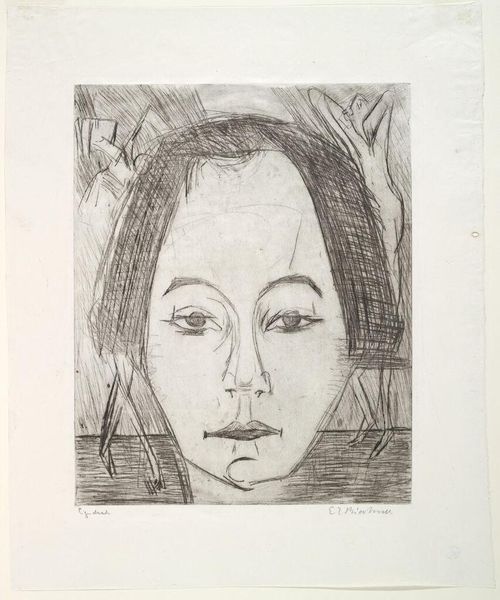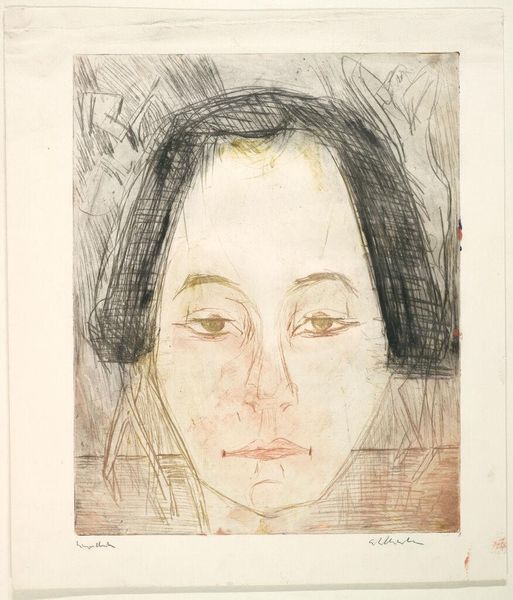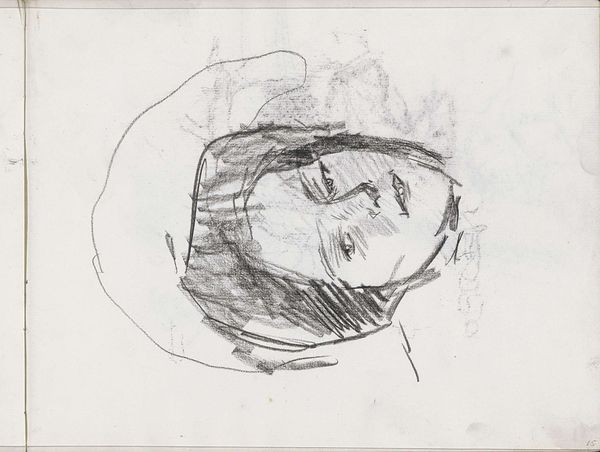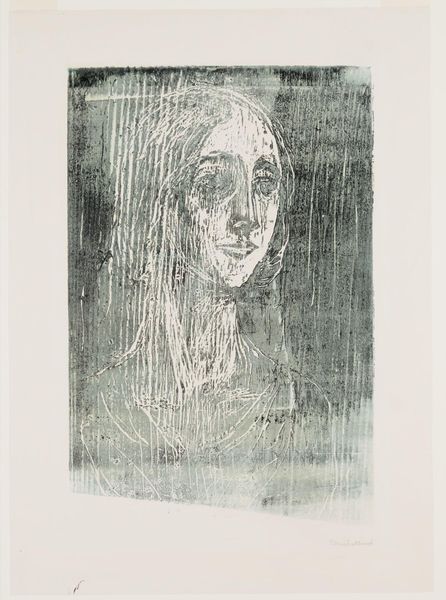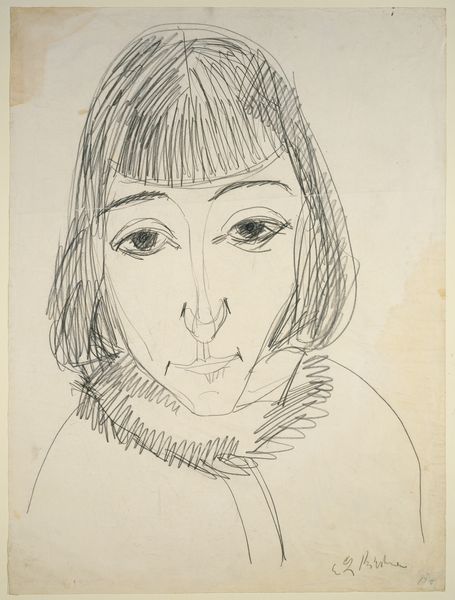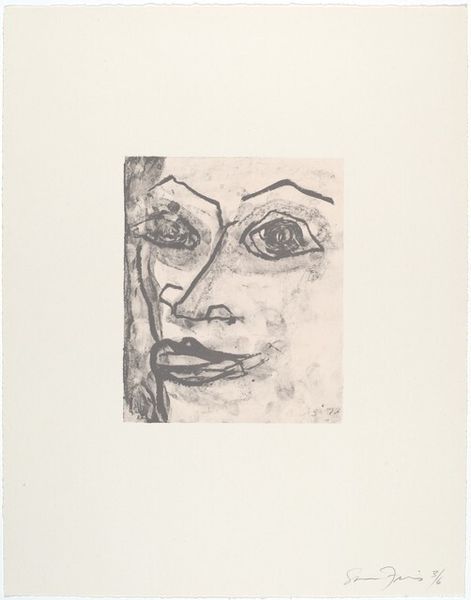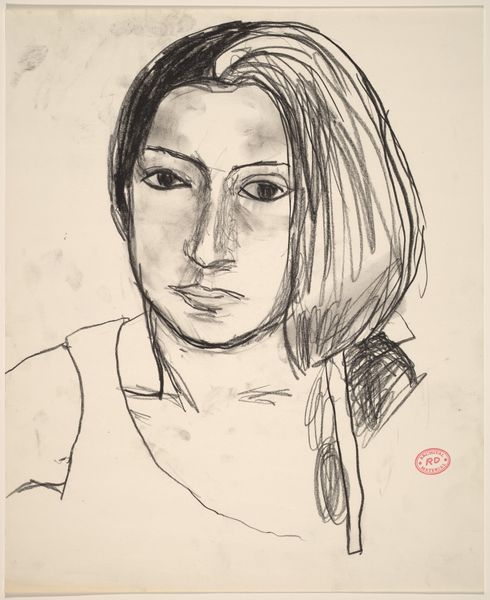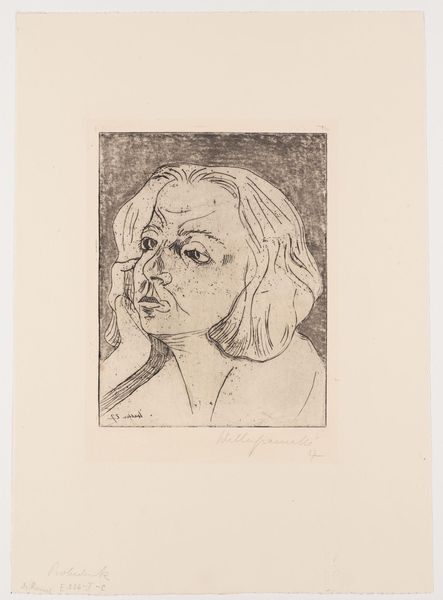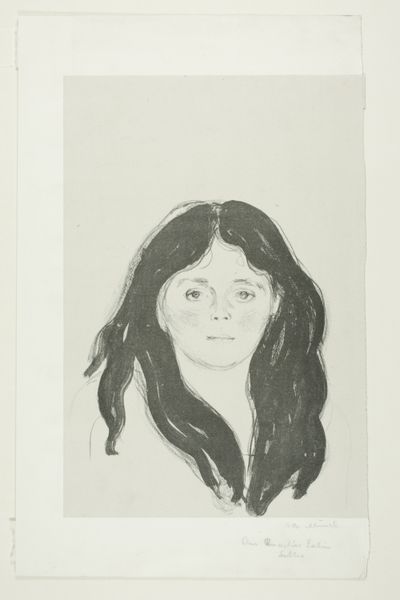
drawing, dry-media, pencil
#
portrait
#
pencil drawn
#
drawing
#
figuration
#
dry-media
#
pencil
#
expressionism
#
portrait drawing
Copyright: Public Domain
Curator: Before us, we have Ernst Ludwig Kirchner’s 1921 pencil drawing, "Kopf der Tänzerin (Nina Hard)," currently held at the Städel Museum. This portrait captures a dancer, situating it within the socio-cultural context of Weimar-era Germany, a period marked by significant shifts in gender roles and artistic expression. Editor: The first thing that strikes me is the austerity of the drawing, almost minimalist in its approach, using sparse pencil strokes, to create a subdued effect. Curator: Absolutely. Consider that Kirchner, deeply affected by his experiences in World War I, turned to portraying figures, especially dancers and performers, who embodied a sense of freedom and transgression against societal norms. Nina Hard herself, as a dancer, represented a renegotiation of femininity and agency during this period. Editor: Yet the angularity in the execution of lines, the stark contrasts, gives an underlying feeling of restlessness, not so much in the pose as in the energy transmitted. Kirchner doesn't try to hide his process. Look at those deliberate pencil markings; they feel like he wants us to focus on their movement and impact. Curator: Indeed. One might argue that this tension reflects a broader societal anxiety prevalent during the Weimar Republic. Expressionism often grapples with representing internal states of emotional distress or upheaval through distorted forms and exaggerated features. Kirchner’s dancers are never simply decorative figures, but potent symbols of an era's complex negotiations. Editor: Despite the intensity, there is also balance to be seen; the shadow play and light distribution provide a stable geometric effect overall, pushing us to see the subject through an aesthetic and intellectual, rather than a strictly emotional, prism. Curator: I see that interplay too. Looking at the piece, I can see how the drawing reveals tensions that echo across history. Editor: And seeing your interpretation enriches how I understand its formal strategies, bridging the visual elements with historical narratives.
Comments
No comments
Be the first to comment and join the conversation on the ultimate creative platform.
